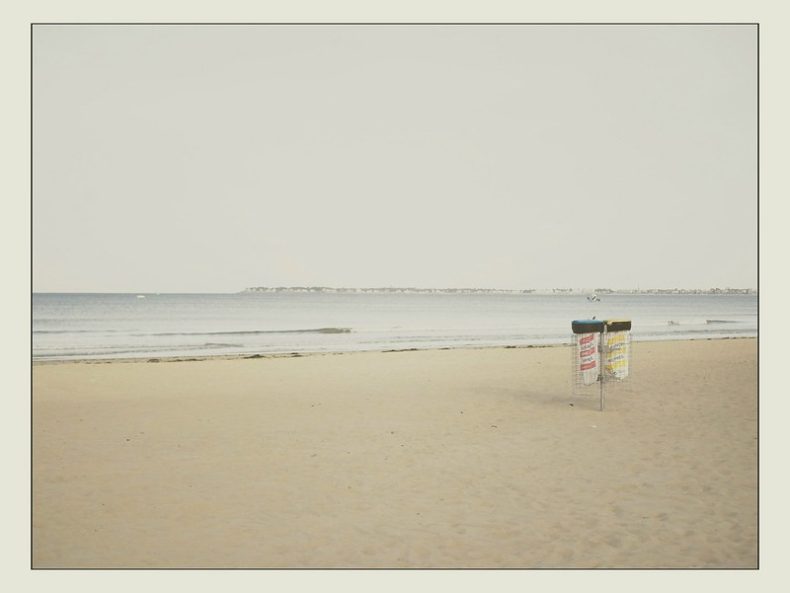
It’s dark well into the morning now, and the dark is glorious. The kids sleep later, so I went for a walk on Sunday down to the beach. The sun hadn’t quite risen yet and I felt rested and settled by the quietness of fall. The sun seemed to rise slowly, too—plenty of time to enjoy it, to watch it brush on each cloud and to notice the contrast between the orange light and the purple mountains. Also, it was cool enough that I was wearing my favorite jacket, which has holes in the sleeve where I used it to grab a hot pan.
The beach, too, has a different feel in fall. The lifeguard towers are closed up. Soon, the swim buoys will be taken down. It doesn’t have the hum that means that in a few short hours, people will roll out their towels and take off their t-shirts and lie down or play or dig or swim.
On Sunday there still a few things left, though. There’s a half of a clear plastic cup. Two balloons, one blue and one purple. They were still inflated and had white letters that say Feliz Cumpleaños; they were still s tied with little broken leashes of twine. There was an empty two-liter bottle of Pineapple Crush (natural and artificial flavors) and a stray bag of dog poop. A forgotten turquoise shovel that I knew someone was missing. The air was just the right temperature, the smell from the sea salty and fresh, releasing those negative ions that make us feel better.
Farther out in the Santa Barbara Channel, scientists who took sediment samples from the channel floor found that the sediments there were threaded with microplastic. Looking through layers of sediment, they found that the amount of plastic had doubled every 15 years since 1945. “Our love of plastic is actually being left behind in our fossil record,” said lead author Jennifer Brandon, a microplastics biologist at Scripps Institution of Oceanography, in a press release. Much of the plastic found in the sediment cores that the researchers took was from clothing fibers; all of it was tiny. There’s no trash gyre clogging the Channel. Still, what we leave behind runs away from us in stormwater, runs out through our treatment plant through a pipe to the sea, and finds its way to the bottom, year after year.
My kids have often said, when we pass one of those roadside signs that threatens steep fines for littering, Who would throw trash here? We would never do that! But I know that straw wrappers have rolled out of my open car doors when I haven’t been watching. The tops of apple sauce pouches have spun out of small hands like tiny green rotors when something more interesting appeared on the horizon. At the beach, in the scramble to get everyone safely home, I have left behind more than one plastic shovel, a towel, a single flip flop. Sometimes, I’ve found them again, put by another beach goer on the rocks that line the place where the beach ends and the bluff begins. Other times, they’ve been lost to the sand or the sea.
On Sunday, I walked for a while along the beach and then took the stairs to the top of the bluff. The sun had risen by then, and it was now behind me, sending my shadow rippling up each step. In high school, someone inflated the heights of all the players on my volleyball team by several inches so that we would look more intimidating on paper. Suddenly I was a respectable-seeming 5’7” offside hitter.
I grew in college; on a good day I’m 5’6”. But in the shadow I cast on the beach steps, I was six feet, seven feet, eight. The balloons I held in one hand swelled, too, and the light filtered through the clear plastic of the soda bottle, which now looked like a magnum of wine. All the way home my shadow glided in front of me, a giant that walked along the hedges and the sidewalks, with all the things it carried, all the things it would leave behind.
*
Image by Flickr user L’autre hidalgo under Creative Commons license.